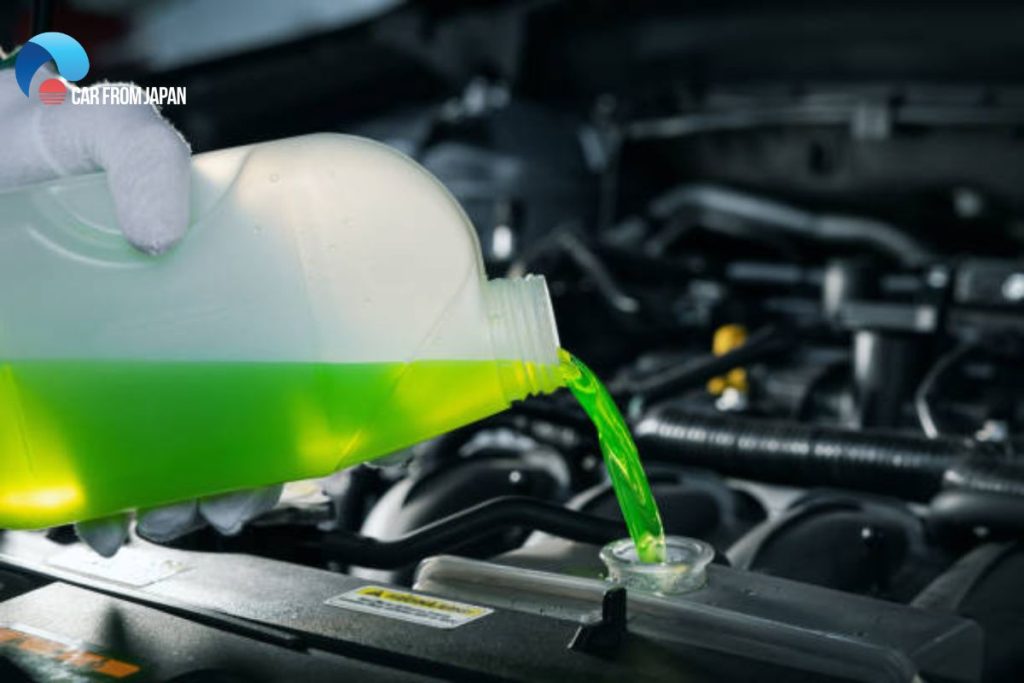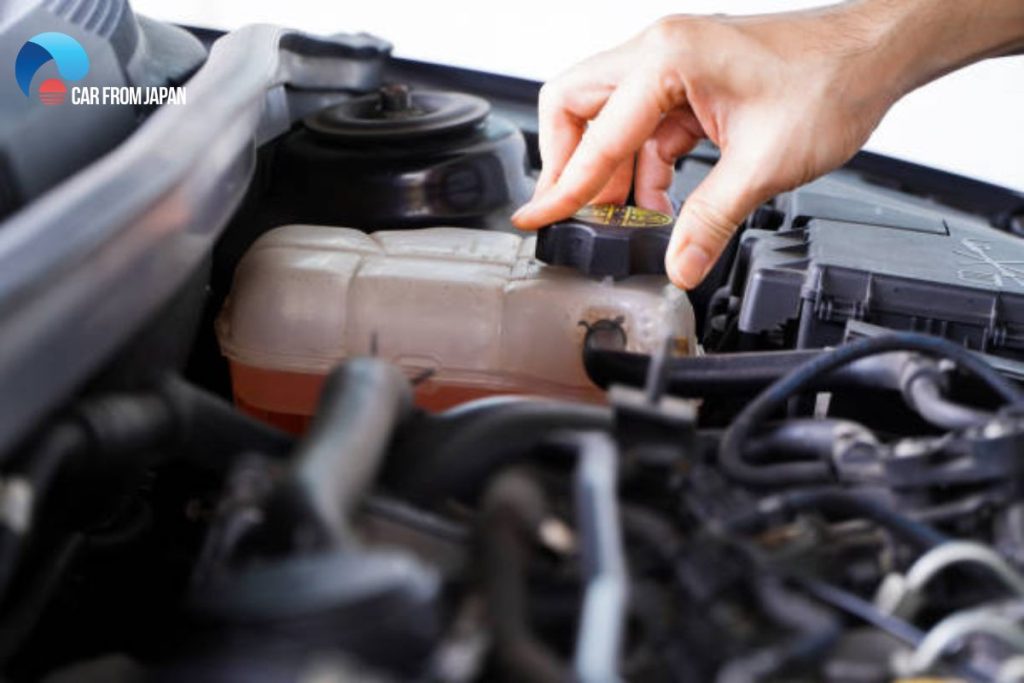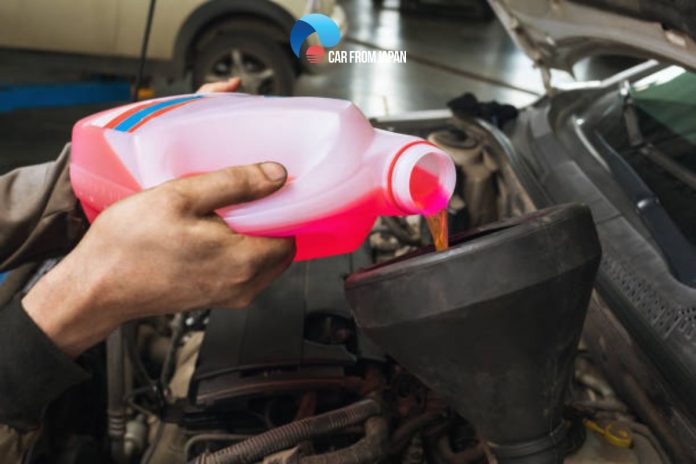In addition to fuels such as engine oil and gasoline, coolant is a critical fluid of every vehicle. How to choose the right coolant for a car is a question that many drivers need to ask because there are many different types of coolants on the market today. Don’t worry, take note of the 6 tips below to choose the best coolant for car:
Contents
Basic Types Of Car Coolants You Should Know
Normally, car engines are placed inside sealed compartments and generate a large amount of heat during operation. This challenged engineers to invent new ways to cool the engine, and car coolant was developed with the primary function of maintaining optimum engine temperature.
Coolant is a compound consisting of distilled water, Ethylene Glycol, and several substances that have anti-evaporation, anti-corrosion, reduced electrolysis, and especially anti-freeze effects. Antifreeze helps lower the freezing point and raise the boiling point so the coolant can work well in harsh conditions.
The coolant plays an important role in the cooling system, so choosing a suitable coolant for your car is also a crucial job. However, as mentioned above, since there are many types of coolants, many customers feel confused when buying this fluid. Typically, the coolant is divided into 3 types with different scaling, antifreeze, and boiling temperature indexes, including:
- IAT (Inorganic Additive Technology)
- OAT (Organic Acid Technology)
- HOAT ( Hybrid Organic Acid Technology).
Alternatively, they are also distinguished by colors: green, red, blue, pink, or yellow.
- Orange, red, and blue coolants often use OAT technology. This type of coolant does not contain Silicate or Phosphate, but still has corrosion inhibitors and is organic. This type is considered environmentally friendly and is the most commonly used today.
- Green coolant often uses IAT technology. This coolant often contains Silicates and phosphate corrosion inhibitors…

Besides color, coolant is also classified as Long Life Coller (LLC) and Super Long Life Coller (SLLC). The difference between LLC and SLLC is mainly the proportion of Ethylene Glycol ingredients, and LLC has added Diethylene Glycol while SLLC does not. LLC coolant is usually green and red, while SLLC is blue and pink.
How To Choose The Right Coolant For A Car?
It would be very convenient if every automaker used the same coolant, but they don’t so when you change the coolant, what coolant do i need for my car?
Coolant color
Different coolant colors will have different functions and features. For example, the blue SLLC coolant has the longest usage time, followed by the pink SLLC. The LLC type has a shorter lifespan. LLC is often recommended for use on older cars, while SLLC is used on new cars.
Normally, dark blue or green coolant will be used directly without having to add pure water. This fluid often applies inorganic additive technology (IAT) to create the above two colors. This is old technology and requires replacement every 2 years or every 60,000 miles.
Red coolant is usually mixed with pure water in a 50:50 ratio before it can be used. The red coolant uses Organic Acid Technology (OAT), which has better durability than IAT.
Owner’s manual
This is the best resource you can refer to. Each automaker also has its own regulations on changing coolant. In addition, car manufacturers also recommend suitable types of car coolant for the manual.
For the convenience of car owners, many manufacturers note whether LLC or SLLC coolant should be used in the vehicle owner’s manual. Make sure that you check the guidebook before buying the coolant for your car, it will specify the exact coolant formulation and sometimes even the brand.
Car’s age
There’s a general guideline for using the coolant based on the year of manufacture of your car :
- Pre-1998: These vehicles typically use Inorganic Additive Technology (IAT) coolant, often green, which typically has a 50/50 mix for protection down to around -35°C (-31°F).
- Post-1998: These cars often need Organic Acid Technology (OAT) coolant, which is silicate-free for better corrosion protection. It can be in various colors.
Additionally, If you’re not sure after checking the owner’s manual, let’s consult a trusted mechanic. They can advise on the suitable coolant for your car based on its make, model, and year.

What Are The Best Car Coolant You Can Buy?
On the market nowadays, there are many types of coolants from many different brands, some of which are highly appreciated and commonly used, including:
1. Prestone
This is a type of car coolant from the US brand, recommended for use by car manufacturers such as GM, Ford, and Chrysler. Prestone coolant can withstand boiling up to 129 °C and freezing up to -36oC. In particular, Prestone car coolant can be used continuously for 5 years or 150,000 miles (about 241,401 km).
Most Prestone coolants can be used directly without adding water, bringing convenience to users. Besides, the products meet the strict standards of most major automobile in the world such as Toyota, Ford, BMW,…
2. Valvoline Zerex G05
Valvoline has a long history, founded in 1866, and its products are available in 140 different countries. Zerex Red coolant is one of more than 10 high-end coolant product lines of the company. Zerex G05 is formulated entirely from a Silicate-free HOAT formula that protects the cooling system from rust and corrosion.
It combines the most advanced phosphatized organic acid additive technology in an ethylene base. Glycol to completely protect today’s cooling systems and engine components. Zerex coolant has a lifespan of 5 years or 150,000 miles. Zerex G05 is proven to improve the engine lifespan in newer Ford, Chrysler, and Mercedes-Benz cars, light trucks, and heavy-duty vehicles.
3. Liqui Moly
The Liqui Moly brand was developed in 1957 and has produced more than 4,000 additive products, lubricants, and car maintenance and care solutions.
Liqui Moly has many different lines of engine coolant, most of which use OAT technology. Liqui Moly coolant is also an advanced product that effectively helps cool down and prevent corrosion and rust. In addition, this coolant is also free of nitrides, amines, phosphates, and silicates, and is formulated to be ready for use without the need for additional water.
Notes When Changing Car Coolant
- Do not use water, mineral water, tap water, or bottled water… to mix with car coolant. The above types of water have greater hardness, not to mention higher sedimentation, which can easily cause rust and severely affect the structure of the cooling system.
- Do not add additional antifreeze unless recommended by the manufacturer. You only replace car coolant according to the car manufacturer’s requirements, and you also need to consider other types of car coolant before applying.
- If you add or change coolant, use the same color as what is in the vehicle’s tank. Never mix coolants of different colors for use. Mixing different colored coolants can damage the radiator and cooling system.
Watch more:
Conclusion
Remember, the right coolant does more than just prevent overheating—it stops corrosion from destroying your engine from the inside out. This is one area where you never want to guess. Taking a few minutes to find the right spec in your owner’s manual is the best and cheapest insurance you can buy for your cooling system.



